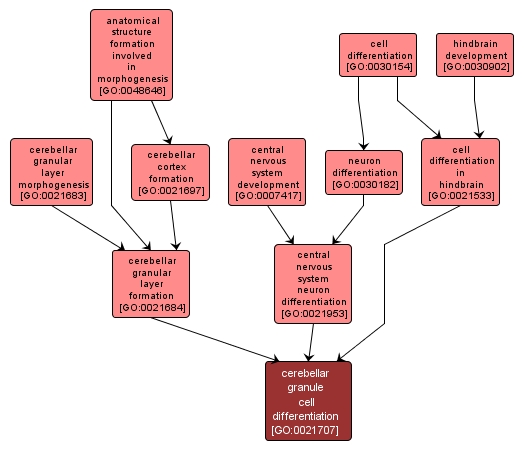| Desc: |
The process whereby neuroblasts acquire specialized structural and/or functional features that characterize the mature cerebellar granule cell. Differentiation includes the processes involved in commitment of a neuroblast to a granule cell fate. A granule cell is a glutamatergic interneuron found in the cerebellar cortex. |














